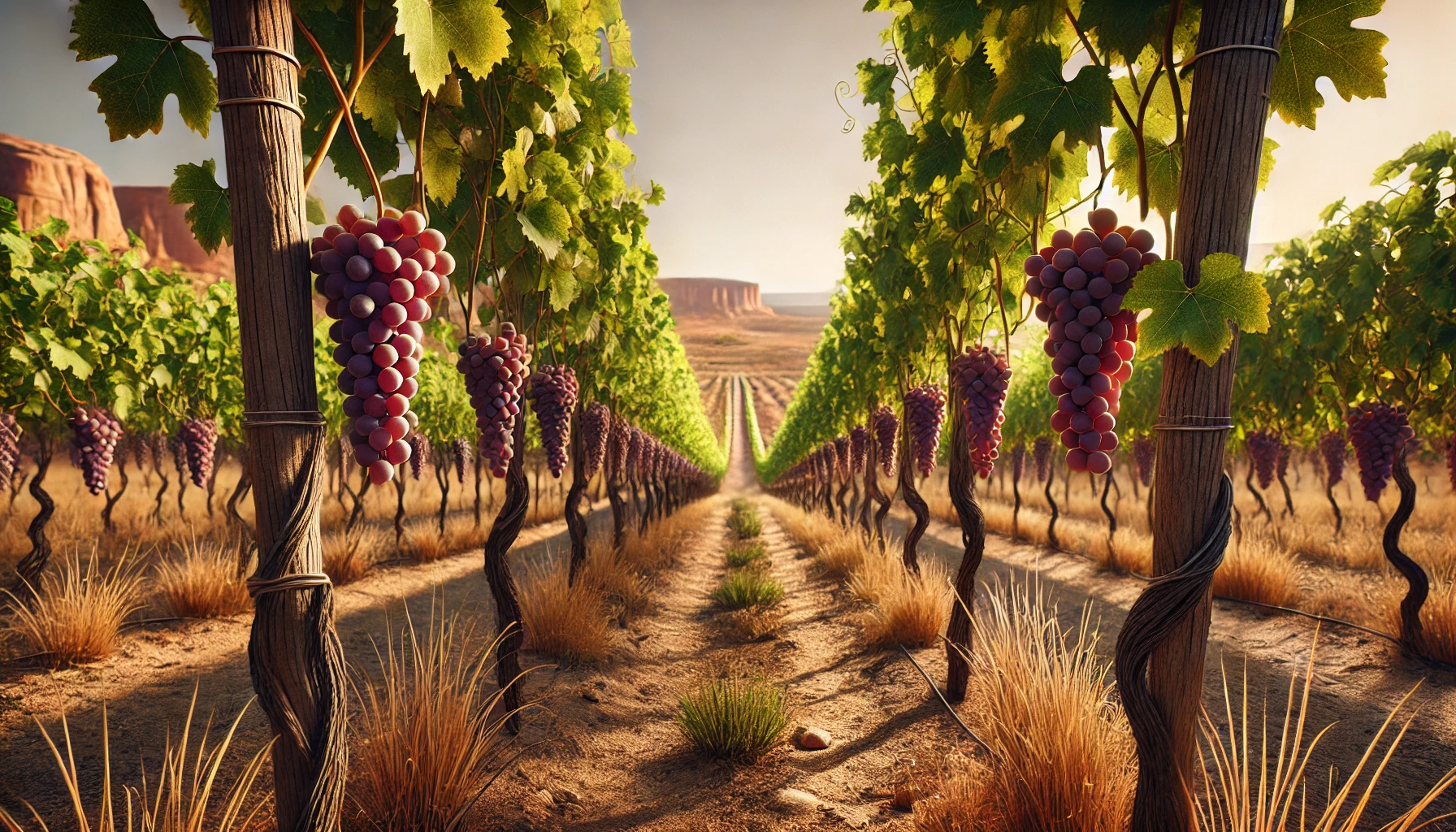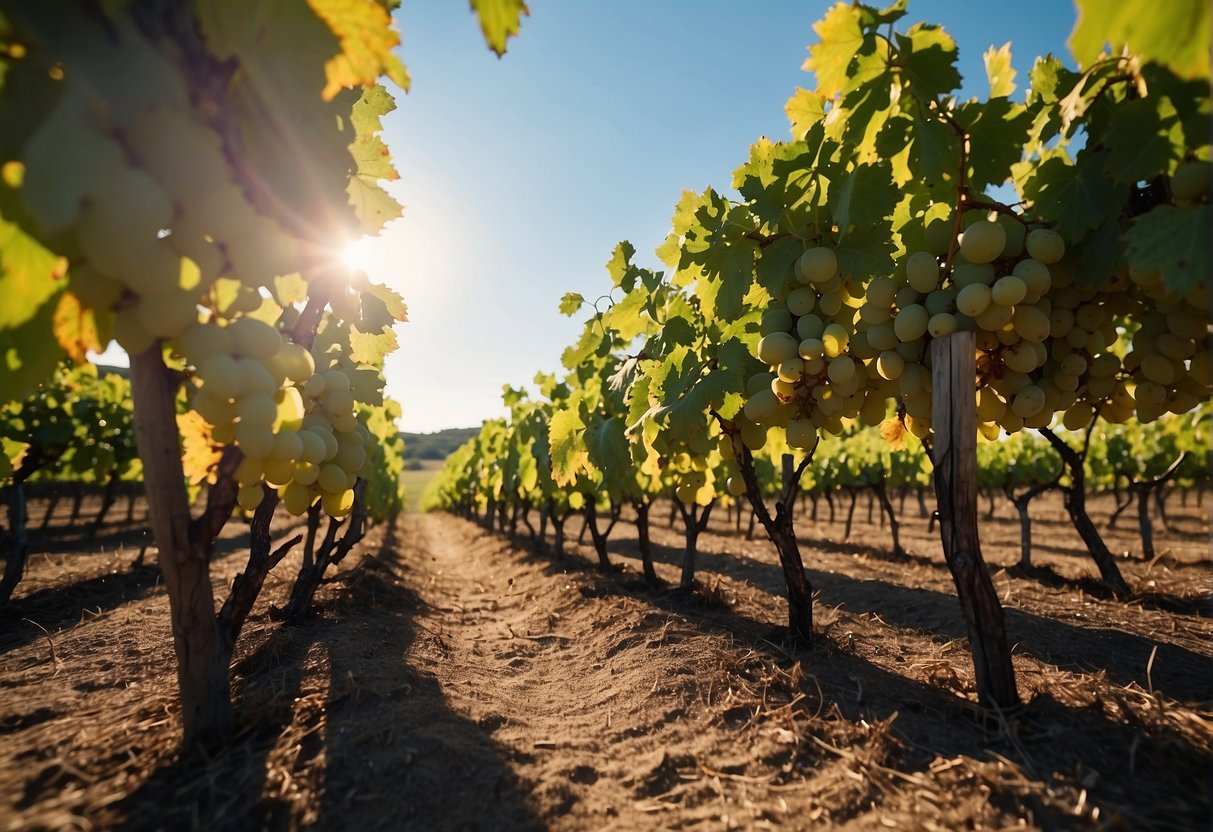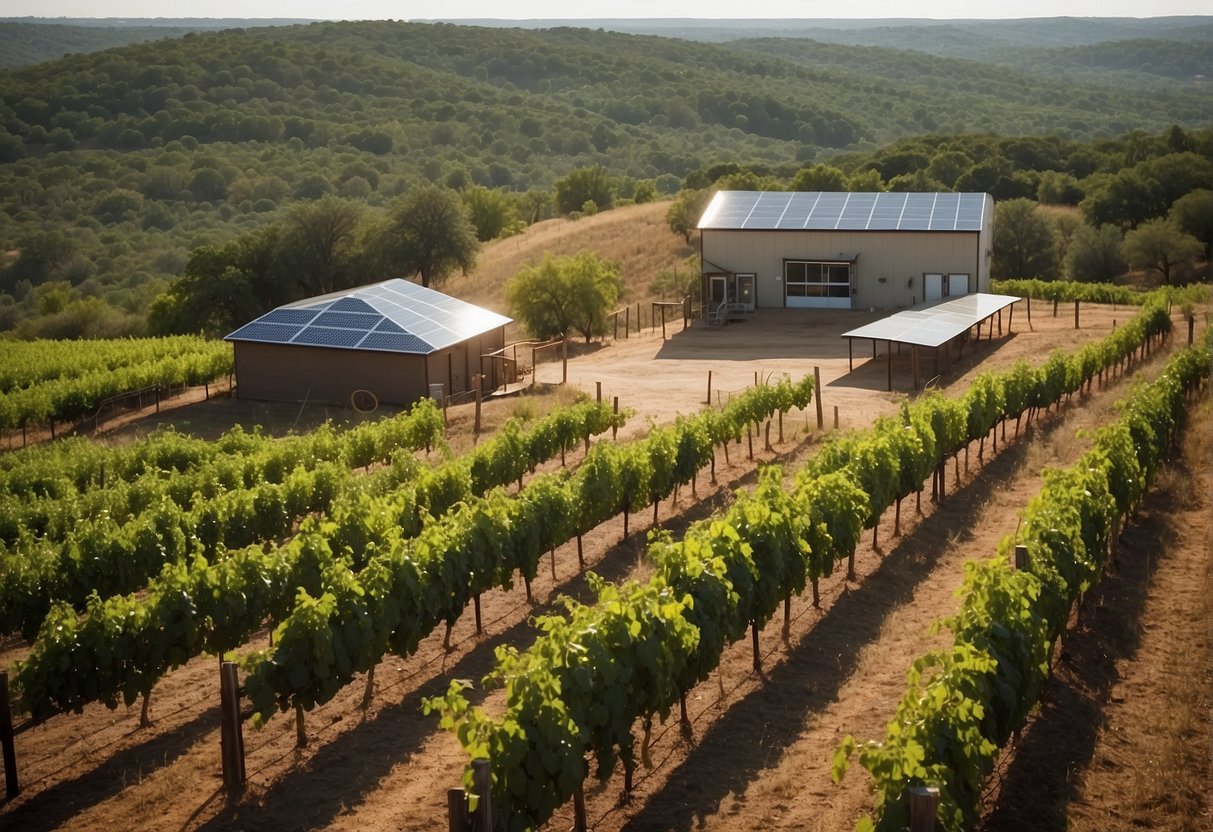
Texas is home to a thriving wine industry, with vineyards spread across the state producing a variety of grapes. However, the unique climate of Texas can have a significant impact on the grape harvesting process. From extreme weather patterns to unpredictable growing seasons, Texas grape growers must navigate a range of challenges to produce high-quality grapes.
One of the biggest challenges faced by Texas grape growers is the unpredictable weather patterns that can occur throughout the state. From late-spring frosts to torrential spring rains, weather events can cause significant crop losses and potential problems for wine grape producers. Additionally, the hot and dry climate in some areas of Texas can make it difficult to grow certain grape varieties, while other regions may experience excess humidity or rainfall that can lead to fungal diseases in the vines. Despite these challenges, Texas grape growers have developed innovative techniques to manage their vineyards and produce high-quality grapes that reflect the unique terroir of the state.
Texas Climate and its Impact on Grape Harvesting
Texas climate has a significant impact on grape harvesting. Grape growers in Texas face a range of challenges, including seasonal variations, extreme weather events, and vineyard management. In this section, we will explore how these factors affect grape harvesting in Texas.
Seasonal Variations and Grape Growing
Texas has a warm and humid climate, which can be challenging for grape growers. Grape varieties that are well-suited to Texas include Blanc du Bois, Black Spanish, and Lenoir. These varieties are resistant to pests and diseases and can withstand the hot and humid conditions of Texas.
The growing season for grapes in Texas typically runs from April through October. During this time, grape growers must contend with a range of seasonal variations, including rainfall, droughts, severe heat, and frost. Texas receives an average of 34 inches of rainfall per year, with most of it falling during the spring and summer months. Grape growers must carefully manage water to ensure that the vines receive the right amount of moisture.
Extreme Weather Events and Vineyard Management
Extreme weather events are a significant threat to grape harvesting in Texas. Winter Storm Uri, which hit Texas in February 2021, caused significant damage to vineyards across the state. Grape growers must be prepared for extreme weather events and have a plan in place to protect their crops.
Vineyard management is also critical to grape harvesting in Texas. Grape growers must carefully manage their vineyards to ensure that the vines are healthy and productive. This includes pruning, fertilizing, and pest control. Grape growers must also monitor the weather and adjust their management practices accordingly.
In conclusion, Texas climate has a significant impact on grape harvesting. Grape growers in Texas face a range of challenges, including seasonal variations, extreme weather events, and vineyard management. By carefully managing their vineyards and being prepared for extreme weather events, grape growers can ensure a successful harvest.
Role of Soil in Texas Vineyards
Soil Types and Grape Varieties
The soil type in Texas vineyards plays a crucial role in the growth and development of grapevines. The state has a diverse range of soil types, including sandy, clay, and loam soils. The soil texture and composition affect the vine’s ability to absorb nutrients and water, which in turn affects the grape’s flavor, aroma, and color.
Different grape varieties thrive in different soil types. For instance, sandy soils are ideal for growing grapes that require good drainage, such as Cabernet Sauvignon and Merlot. On the other hand, clay soils are better suited for grapes that require higher water retention, such as Chardonnay and Pinot Noir.
Soil Management for Quality Fruit
Soil management is crucial in Texas vineyards to ensure the production of quality grapes. Growers must take into account factors such as soil pH, nutrient availability, and water retention. Soil pH affects the availability of nutrients to the grapevine. For instance, if the soil pH is too high, iron and zinc may become unavailable to the vine, leading to chlorosis.
To ensure the availability of nutrients, growers must conduct soil tests to determine the nutrient levels in the soil. Based on the results, they can then apply fertilizers to supplement the nutrients that may be lacking. Additionally, growers must ensure that the soil has good drainage to prevent waterlogging, which can lead to root rot and other diseases.
In conclusion, the soil type and management practices in Texas vineyards play a crucial role in the quality of grapes produced. By taking into account the grape variety and soil type, growers can ensure the production of high-quality grapes that are rich in flavor, aroma, and color.
Water Management in Texas Viticulture
Water management is a crucial aspect of viticulture in Texas, where drought conditions are common. Adequate soil moisture is essential for grapevine growth, and its manipulation is a key vineyard management practice.
Irrigation Systems and Techniques
Irrigation is the most common water management technique used in Texas viticulture. The goal of irrigation is to supplement natural rainfall to maintain soil moisture levels. Drip irrigation is the most widely used system in Texas vineyards. This system delivers water directly to the roots of the grapevines, minimizing water loss due to evaporation.
Drip irrigation systems also allow for precise control of water application, which can be adjusted based on vineyard needs. This system is particularly useful in Texas, where water is scarce and drought conditions are common.
Drought Mitigation Strategies
Drought can have a significant impact on grapevine growth and fruit yields. Therefore, it is essential to implement drought mitigation strategies in Texas vineyards. These strategies include:
- Mulching: Mulching the soil around the grapevines can help retain soil moisture by reducing evaporation.
- Cover crops: Cover crops can help maintain soil moisture levels by reducing soil temperature and increasing soil organic matter.
- Pruning: Pruning can help reduce water stress in grapevines by reducing the number of shoots and leaves that need water.
It is important to note that drought mitigation strategies should be implemented before drought conditions occur. Proactive measures can help reduce the impact of drought on grapevine growth and fruit yields.
In conclusion, water management is a critical aspect of viticulture in Texas, where drought conditions are common. Drip irrigation is the most widely used system in Texas vineyards, and drought mitigation strategies should be implemented to reduce the impact of drought on grapevine growth and fruit yields.
Grape Varieties and Their Adaptation to Texas Climate
When it comes to grape harvesting in Texas, it’s important to consider the grape varieties that are best suited to the climate. Certain grape varieties are better adapted to the hot and dry climate of Texas, while others may struggle to grow in these conditions. In this section, we’ll take a closer look at popular grape varieties in Texas and how they have adapted to the unique climate challenges of the state.
Popular Grape Varieties in Texas
Texas is home to a variety of grape varieties, both those that are native to the region and those that have been imported from other parts of the world. Some of the most popular grape varieties in Texas include:
- Cabernet Sauvignon: This is a red wine grape variety that is well-suited to the hot and dry climate of Texas. It is known for producing full-bodied wines with rich flavors and aromas.
- Merlot: Another popular red wine grape variety in Texas, Merlot is known for its soft, fruity flavors and low tannins. It is often blended with other grape varieties to produce complex and balanced wines.
- Blanc du Bois: This is a white wine grape variety that is native to the Gulf Coast region of Texas. It is known for producing crisp and refreshing wines with citrus and tropical fruit flavors.
- Tempranillo: This is a red wine grape variety that is native to Spain but has adapted well to the hot and dry climate of Texas. It is known for producing wines with bold flavors and aromas of dark fruit, leather, and tobacco.
Adapting Grape Varieties to Climate Challenges
While some grape varieties are naturally well-suited to the Texas climate, others require more careful adaptation to thrive in this environment. For example, Vitis vinifera, a grape species that is widely used in winemaking, is not well-adapted to the hot and humid conditions of Texas. To overcome this challenge, growers may need to use rootstocks that are better adapted to the climate, or they may need to plant grape varieties that are more resistant to disease and pests.
In addition to adapting grape varieties to the climate, growers in Texas also need to take steps to mitigate the effects of extreme weather events such as droughts and heat waves. This may include using irrigation systems to ensure that grapevines receive enough water, or using shade cloth to protect grapes from intense sunlight.
Overall, the adaptation of grape varieties to the Texas climate is an ongoing process that requires careful attention to detail and a deep understanding of the unique challenges posed by this environment. By selecting the right grape varieties and taking steps to mitigate climate challenges, growers in Texas can produce high-quality wines that reflect the unique terroir of the region.
Impact of Climate on Wine Quality
Climate Influence on Wine Flavor Profile
The climate plays a crucial role in determining the flavor profile of wine. Texas has a warm and dry climate, which can result in wines with a big, bold, and fruity flavor profile. The hot temperatures in Texas can cause the grapes to ripen quickly, resulting in higher sugar content and lower acidity. This can lead to wines with a jammy flavor profile, which is often associated with warmer climates.
On the other hand, cooler temperatures can result in wines with higher acidity and lower sugar content, which can lead to a more balanced flavor profile. The climate can also influence the types of grape varieties that are grown in a region. For example, cooler climates are better suited for growing grapes like Pinot Noir, which require cooler temperatures to develop their complex flavor profile.
Vintage Variation Due to Climate
The climate can also have a significant impact on the vintage variation of wines. In Texas, the climate can be unpredictable, with harsh weather patterns that can impact grape yields. For example, in 2021, Texas vintners experienced a vintage filled with unexpectedly harsh weather patterns, resulting in a significant decrease in grape yields. However, despite the low quantity of grapes, Texas vintners hailed the 2021 vintage as excellent in terms of quality.
Vintage variation due to climate can also impact the quality of fruit that is produced. In cooler years, the grapes may not ripen fully, resulting in lower sugar content and higher acidity. This can lead to wines with a more subtle flavor profile, which may be preferred by some wine connoisseurs. In warmer years, the grapes may ripen too quickly, resulting in higher sugar content and lower acidity. This can lead to wines with a jammy flavor profile, which may be less desirable to some wine connoisseurs.
In conclusion, the climate has a significant impact on the quality of wine produced in Texas. The warm and dry climate can result in wines with a big, bold, and fruity flavor profile, while cooler temperatures can result in wines with a more balanced flavor profile. Vintage variation due to climate can also impact the quality of fruit and the flavor profile of wines produced in Texas.
Challenges and Innovations in Texas Grape Harvesting
Dealing with Pests and Diseases
Texas grape growers face numerous challenges when it comes to pests and diseases. Aphids, cotton root rot, and botrytis are just a few of the many issues that can cause crop losses. Disease pressure is particularly high in Texas due to the hot and humid climate, which creates ideal conditions for fungal growth.
To mitigate these challenges, growers are increasing their awareness of pest and disease management practices. They are utilizing integrated pest management techniques, such as the use of beneficial insects and natural predators, to reduce the need for chemical pesticides. Additionally, growers are planting disease-resistant grape varieties and implementing cultural practices, such as pruning and canopy management, to reduce disease pressure.
Innovations in Grape Harvesting
Innovations in grape harvesting have also helped Texas growers overcome some of the challenges they face. One such innovation is the use of mechanical harvesters, which can significantly reduce labor costs and increase efficiency. These machines can harvest grapes at a much faster rate than manual labor, which is particularly important during the hot Texas summers.
Another innovation is the use of hail netting, which protects grape vines from damage caused by hailstorms. This technology has become increasingly popular in recent years, as Texas has experienced more frequent and severe hailstorms.
Overall, Texas grape growers face many challenges when it comes to harvesting their crops. However, through increased awareness and mitigation efforts, as well as innovative technologies, they are able to overcome these challenges and produce high-quality grapes.
Texas Wine Regions and Their Unique Climates
Texas is home to several distinct wine regions, each with its own unique climate that plays a crucial role in grape harvesting. The state is divided into eight American Viticultural Areas (AVAs), with the two largest being the Texas High Plains and the Texas Hill Country.
Climate of Texas High Plains
The Texas High Plains region covers a vast area of flat, arid land situated at an elevation of around 3,000 feet above sea level. The climate here is characterized by long, hot summers with cool nights, which help balance grape acidity. Additionally, the region receives low rainfall, which decreases the chance of disease. The mineral-rich soil is mostly sandy loam over limestone, which provides excellent drainage for the vines.
Climate of Texas Hill Country
The Texas Hill Country region is located in central Texas and is the second-largest AVA in the state. The region has a unique climate that is characterized by hot summers and mild winters. The soil is mostly limestone, which provides excellent drainage and imparts a unique flavor to the grapes. The region’s elevation ranges from 425 to 2,200 feet above sea level, and the area receives an average of 30 inches of rainfall per year.
Other notable wine regions in Texas include Fredericksburg, which is located in the heart of the Texas Hill Country. Fredericksburg is known for its German heritage and is home to several wineries that specialize in producing German-style wines. The North Texas region is also noteworthy, with its unique climate that is characterized by hot summers and cold winters. The Coastal Bend and Gulf Coast regions are located near the Gulf of Mexico and have a warm, humid climate that is ideal for growing Muscadine grapes.
In conclusion, Texas has several distinct wine regions, each with its own unique climate that plays a crucial role in grape harvesting. The Texas High Plains and Texas Hill Country are the two largest AVAs in the state, with each having its own unique climate and soil composition.



